Bayou Structures // Notable Architecture
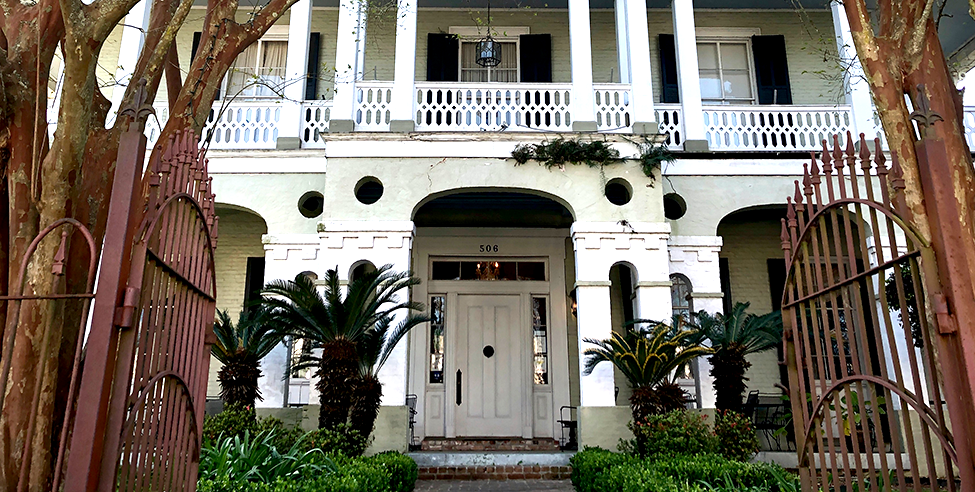
As you travel through the Bayou Region you will likely see a lot of unique architecture you may have not seen anywhere else. These are several characteristics that you will notice all across the region at plantations, hotels and local businesses. French doors are one of the most common architectural features in the Bayou Region. Originally, French doors were used on plantation homes in order to allow the breeze to blow through the house on hot summer days. Today, it is very common to see these types of doors on homes and businesses, but they are mainly used because they are reminiscent of traditional southern architecture. Shutters can be found on many building in coastal regions, including the Bayou Region. These shutters are used to protect windows when hurricanes hit. Even though shutters were originally used for protective purposes, today they are also used for aesthetic reasons. Many homes in this region have shutters for their functionality and for their traditional looks. Many of the houses and plantations you see will be raised off the ground. They are raised because the Bayou Region is prone to flooding and by raising the living quarters off the ground they are less likely to be affected by the rising waters during a storm. The amount the building is raised can vary from one foot up to several feet. Large porches can be seen all across the region. These porches can sometimes even wrap around the entire building. These large porches were used for socialization and still are today. With large overhangs over the porch, this was a perfect area for people to relax and still stay relatively cool in the southern heat. Mainly seen at plantations, large outside staircases were used to move between the upper-level living quarters to the lower level where people typically worked and cooked. You will see columns on a lot of buildings in the Bayou Region. This style of architecture is reminiscent of Grecian architecture. Columns on homes where an indication of a person’s status. The bigger and more pronounces the columns, the higher that homeowners status within the community. Today, columns are mainly used for aesthetic purposes only. Ironwork is a very common decorative element that is on the outside of many buildings in the Bayou Region. The ironwork you see in the region is a mix of Spanish and Caribbean architectural design. You can see these designs in many different facets including fences, balconies, and awnings.
History Tour // The Water Life Museum
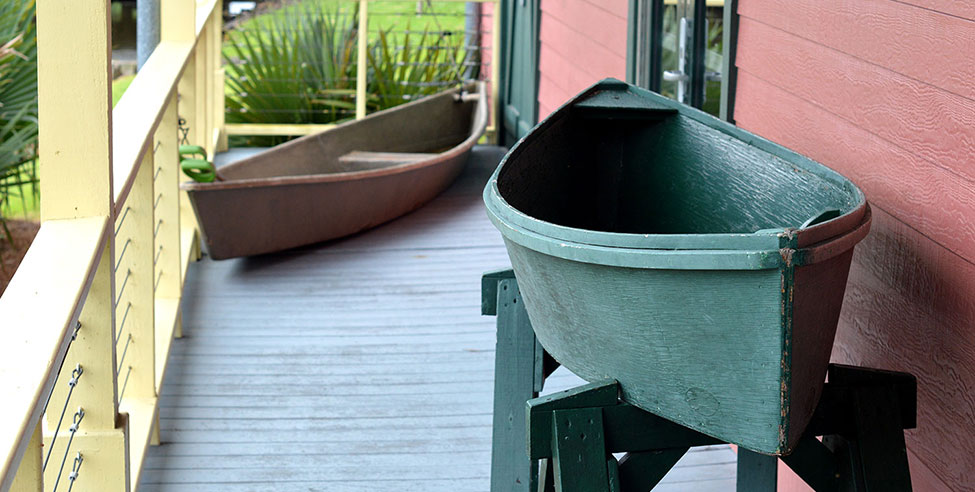
The Bayou Terrebonne Waterlife Museum is a museum with exhibits on The museum is also home to the non-profit organization the South Louisiana Wetlands Discovery Center, which is dedicated to preserving and protecting Louisiana’s coast and wildlife. Traffic passes by the museum sign on West Park Avenue. An assortment of fishing lures on display. A mural on the wall in the museum entrance. The entrance to the museum. Signs pointing to the museum wings. The gift shop, with Cajun t-shirts, crafts, and stories for sale. Cajun artifacts on display inside the front desk. Two pirogues on the back porch. The front porch
Bayou To Go // Eats to Bring Home
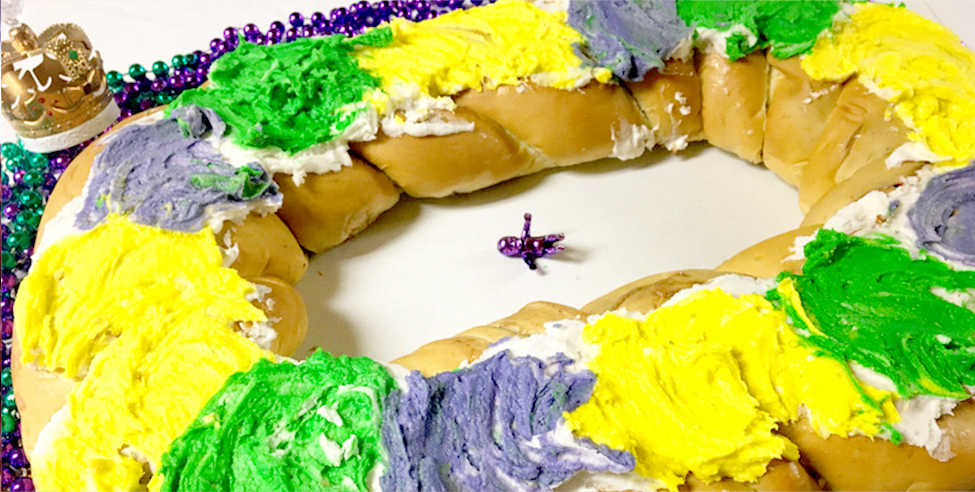
by Trevor Johnson, features editor In South Louisiana, if we put on a blindfold, spin around three times, and throw a rock, we’ll probably break the window of a great restaurant with decades of rich history. However, vandalism is generally frowned upon, so normally it’s best to just eat at those restaurants instead. But what should someone do if they only plan to visit the Bayou Region on vacation, or they’re only in town to attend a family reunion at Cousin Boudreaux’s house? Luckily, there are many dishes and desserts made in Louisiana that can be taken home for whenever there’s a hankering for that one-of-a-kind taste of the bayou. Louisiana’s deep and diverse history may play a part in that one-of-a-kind taste for which Cajun food is so popular. “Food is such an integral part of our tradition,” says Chef Marcelle Bienvenu, a culinary historian, journalist, and instructor at Nicholls State University. “What I think happened is that the best parts of German food, Italian food, African-American, the British, the Spanish— the best part of what they had ended up in our pot. Aren’t we lucky?” King cake, which is said to have a French origin, has become synonymous with Mardi Gras, but there are ways to obtain the frosting-topped treat year round. Cannata’s Family Market has served the South Louisiana area and abroad with their king cakes for almost 90 years. There are three locations in Louisiana— one in Morgan City, and two in Houma. However, anyone from around the country can order Cannata’s king cakes, whether or not it’s Mardi Gras season. “In many ways, King Cakes have become the unofficial mascot of Mardi Gras,” says Joni Blakeman, the sister of Vince Cannata, the owner of Cannata’s Family Market. “When people can’t attend the festivities, king cakes at least give them a little piece of the party.” Liza Verda manages In the Mix, a bakery that she runs from her home in St. Charles Parish, Louisiana, where she bakes cakes, king cakes, and cookies to order. Since In the Mix is a personal endeavor, as opposed to a corporation like Cannata’s, Verda is able to directly interact with the community. “I think king cakes remind people of spending time with family and friends, the people you care about most, and just having a good time,” Verda says. “Like the saying goes, laissez les bon temps rouler— or let the good times roll!” Tasty, portable Cajun eats come in many forms. King cake is arguably the most recognizable and iconic Cajun dessert, but there are other deliverable Cajun dishes and snacks deserving of attention— Zapp’s, the original “spicy cajun crawtator” chips, which come in easily packaged bags; Abita beer, which is brewed in its namesake Abita Springs, Louisiana; or Tabasco, the world famous hot sauce that calls Louisiana its home— that all play an important role in shaping the perception of Louisiana food at home and abroad. So, if someone should ever find themselves in the heart of Cajun country, whether it be for a week or just a few hours, they shouldn’t forget to take home a taste of the bayou.
Bar Hopping // Drink Like a Local
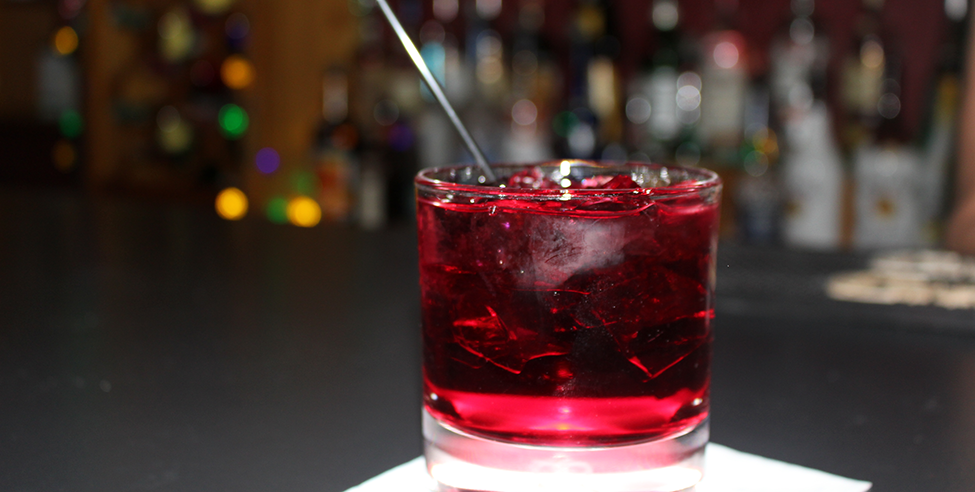
Preserving Cajun Music // A Society
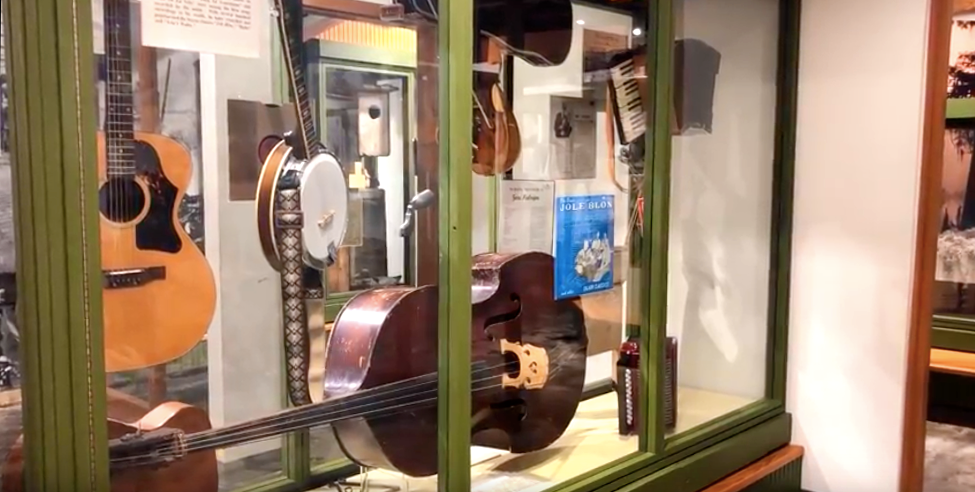
by Madison Boudoin, staff writer In the small town of Thibodaux, the Cajun Music Preservation Society is striving to keep authentic Cajun music alive throughout the bayou region of Louisiana. The society is preserving not only the music, but the rich Cajun culture as well. This non-profit organization sends a group of musicians to perform at a variety of events along the bayou, and hosts a Cajun Jam twice a month. The Cajun Jam takes place at Gina’s at the Legion – a restaurant located in downtown Thibodaux. The jam completely ecompasses the true spirit of the Cajun culture – from the lively music, to the delicious food on the menu. Top that off with a family-friendly environment, and the result is an experience like no other. Locals gather from all over the bayou to watch the performance. There are usually around 80 people that go out to the event for some fun. The jam is nothing less than a night filled with entertainment and good times. “I come to the Cajun Jam for the food and music, but nothing beats the people that are here,” says Mark Portier, a Gray native who loves attending this event with his wife, Yvonne. The couple of 54 years finds joy in dancing the night away with their friends to the sound of traditional Cajun instruments. “The atmosphere is just wonderful. Everyone is so friendly and this is why we come here,” says Yvonne Portier. The jam provides a very welcoming atmosphere – one that is a major part of the Cajun culture and can be found all over the bayou region. The Cajun Jam has the right blend of music, food, and people, which give tourists a small insight to life on the bayou. It is a life that can only be experienced by livin’ like a local. To live like a local, means to eat like a local. At the Cajun Jam, tourists get the chance to do just that. Gina’s at the Legion offers authentic Cajun food that can only be found in southern Louisiana. Authentic Cajun food pairs well with an authentic Cajun performance. According to Quenton Fontenot, co-founder of the society, you will never see the same performance twice. This is because all of the musicians are volunteers which leads to a different set of performers for every show. “I think the always changing mix of musicians at our jams is pretty cool,” says Fontenot. This means that each show provides the audience with a unique experience. The musicians have a strong passion for Cajun music that shines through each and every show. “This is my favorite thing to do, and performing is so much fun,” says David Nieland, a volunteer musician. Nieland plays the guitar, and performs at the Cajun Jam regularly to share his passion for Cajun music with others. Nieland says that it is great to share this music with the locals, but it “means even more” to share it with tourists who may be experiencing the Cajun culture for the first time. “While I am playing my guitar, I like to look around and watch everyone dance,” says Nieland. He says it is wonderful to see new people, especially tourists, learning the Cajun dances from the locals. The Cajun Jam provides visitors with the opportunity to become fully immersed into the Cajun culture. The musicians of the Cajun Music Preservation Society are working hard to make Cajun music more available to people in Southeast Louisiana by hosting the Cajun Jam and taking part in as many local events as possible. Learn more and stay up to date on all events by visiting welovecajunmusic.org.
It’s a Party // Mardi Gras Like a Local

by Madison Boudoin, staff writer Down on the bayou, locals know exactly how to have a good time. Even the smallest of gatherings can turn into a celebration and for no particular reason at all. People on the bayou know how to throw a great party, and Mardi Gras is no exception. Mardi Gras is a season filled with beads, food, traditions, and good times. Communities join together in celebration to live up to the saying laissez les bons temps rouler, which is French for “let the good times roll.” During Mardi Gras, visitors have the opportunity to party like a local at one of the biggest celebrations in the Bayou Region. To truly party like a local, there are traditions that must be followed. Before the celebration can begin, it is important to claim a spot along the parade route. Front row seats are taken quickly, so it is best to show up to the route a few hours early. Spots can be claimed by using portable-folding chairs, tents, or even trash cans – it all works! On Mardi Gras Day, or “Fat Tuesday,” the celebration starts in the early hours of the morning. The locals – dressed in purple, green, and gold – waste no time and begin tailgating long before the parades are scheduled to run. Barbecue pits are fired up, food is served, and families spend quality time with one another as they wait for the parades to begin. “I really do enjoy Mardi Gras. I grew up around it and used to go to parades when I was little with my family that always came in from out of town,” says Kameryn Rome, a Houma native. Rome says that her family used to spend the whole day of Mardi Gras on the Houma parade route. According to Rome, parades on the bayou have a more family-oriented atmosphere compared to the parades in New Orleans, and because of this, it is the perfect location for traveling families to experience Mardi Gras. Parades in both Houma and Thibodaux are very laid-back. “They are very similar in that way,” says Ryan Dubina of Houma. He said that the main difference has to do with size. Thibodaux parades are much shorter, and the floats are smaller. Despite these differences, the celebration is just as big. When the parades start rolling, the competition for colorful beads begins. Everyone stands, waves their hands in the air, and shouts the traditional phrase, “throw me something, mister!” For many locals, this is the most exciting part of the celebration. “Riders throw beads, stuffed animals, toys, homemade trinkets, and a variety of other items. It is fun to see what you will end up catching,” says Bernadette Lanata of Boutte. She watches the parades with her family until the very last float passes. However, the celebration is not complete without a delicious piece of king cake. “It is a tradition in my family to share king cake together after the parades are over,” says Bernadette. It is a sweet treat that should not be passed up. This tasty dessert is easily found at bakeries and local grocery stores all over the bayou during the season of Mardi Gras. Mardi Gras on the bayou is a family event that is filled with many special traditions that the locals appreciate. Locals on the bayou sure know how to, as the French say, “let the good times roll.”
Locally Sweet // Mon Cher Honey
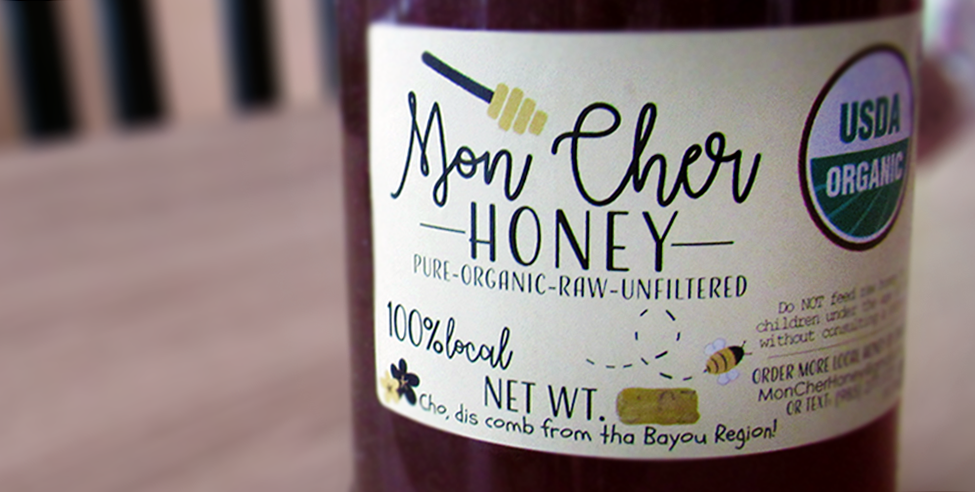
by Ashlyn Verda, staff writer & videographer Cassidy Smith, a 23-year-old Nicholls alumnus, created Mon Cher Honey— mon cher being French for “my dear”— in 2018. What began as an assignment for a college course and a favor for a friend, became a passion project for Smith as the sole owner and operator of the business. “I started off with 60 jars of honey and was completely surprised when they sold out within four or five days,” Smith says. Mon Cher honey is locally harvested and distributed in and around the bayou region of Louisiana. She strains and fills fresh orders of hand-jarred honey from her kitchen table. Mon Cher Honey is certified organic by the United States Department of Agriculture. According to the USDA’s latest agricultural census, “United States honey production in 2017, from producers with less than five colonies, totaled almost 600 thousand pounds, down 22 percent from 2016.” The research shows that only 50 colonies exist in Louisiana. The colonies produced 4,300 pounds of honey, totalling $8,342 in 2017. Smith has already produced about 300 pounds this year. Each hive is removed and relocated by Daniel Achee, who goes by the name Dan the Bee Man. Dan removes bees from the New Orleans, Houma, Thibodaux, Baton Rouge, and Lafayette areas. Dan the Bee Man first contacted Smith with a five gallon bucket of honey he acquired from a bee hive extraction. Ever since starting his business, he wanted to package and sell the honey himself but did not have the time. Since Smith was not working while completing her last semester at Nicholls, she accepted the offer to help Dan. After Smith focused on the project for almost two weeks and researched all things honey, Mon Cher Honey was born. She had full control over the design, marketing outlines, social media strategies, and other professional collaborations. After several trial runs to find the perfect jar for scooping honey, Smith found an American-made jar that is eco-friendly and recyclable. Every 16 oz. jar of Mon Cher honey comes with an information card about honey. “With the purchase of Mon Cher’s local honey, you are saving bees and spreading awareness about endangerment,” Smith says. “We pride ourselves on making sure our customers and our hives are happy. We are always encouraging members of the community to buy local.” Smith says consuming local, raw honey is better than any store bought honey because processed honey loses important enzymes and antioxidants that make it so nutritious. Starting Mon Cher Honey has taught Smith to appreciate local businesses. Smith says the support from small businesses in the community has helped Mon Cher Honey take off. Many local businesses now stock Mon Cher Honey. You can find the jars and T-shirts designed by Smith at Lynn’s Interiors, Ship-N-Geaux, and Weeping Willow Cafe and Bakery in Thibodaux. Smith found her most surprising success at Weeping Willow, where her honey sold out in just two business hours. She received an email the next morning requesting 10 more jars. Smith has even been contacted by markets in New Orleans and Houma looking to charry Mon Cher Honey in the future. One of the biggest challenges Smith has faced as a young business owner is making investments in herself, as well as in the company. “Trusting your instincts is hard and I am constantly learning from my mistakes. Trial and error can be tough, especially knowing I can’t get my time, effort, and money back,” says Smith. Looking forward, Smith plans to move to Austin, TX, in June, where she will continue working as a public relations professional. Smith’s goal is to have the business running smoothly for Dan when he eventually takes over. The pair have discussed hiring a Nicholls Mass Communication intern to help Dan. Damon Smith, Cassidy’s father, says he’s just proud to see his daughter put her passion and education to use. “Cassidy’s determination and drive from an early age let us know that she won’t settle for anything that is just average. She wants to be the best at what she does and will be successful at whatever she puts her mind into.”
Local Art // Chauvin Sculpture Garden
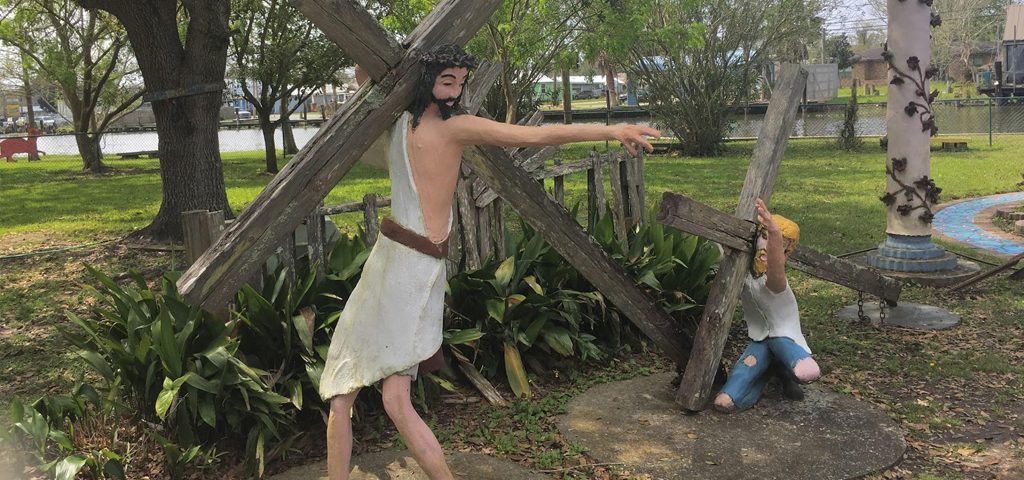
A sculpture depicting Christ and his follower carrying a cross symbolizing the meaning of cross carrying in the bible, which is carrying your own burdens. Photo credit: Sydney Moxley A sculpture of an angel blowing a horn, similar to a revelation in the Bible when the seventh angel will blow the trumpet to announce the second-coming of Jesus Christ. Photo credit: Sydney Moxley A sculpture made by a local artist with the sculpture garden and art studio labels embedded. This is a part of the art studio donated by the Kohler Foundation. Photo credit: Sydney Moxley An overall view of most of the angels in the sculpture garden. This work of Kenny Hill tell the story of his spiritual journey and the need for locals to connect with art more often. Photo credit: Sydney Moxley A sculpture built on the tower depicting the story of Native Americans. Photo Credit: Sydney Moxley The main attraction of the garden, the tower, shows a combination of historical stories told throughout history. Photo Credit: Sydney Moxley Chauvin Sculpture Garden sign outside of the garden, on the right side of the entrance. Photo Credit: Sydney Moxley
Living Local // Experiencing Louisiana’s Bayou

by Al Wilson & Trevor Johnson, Managing Editor & Features Editor Grandma says it starts with the roux, the base. The caramel colored goodness which is the beginning of all Cajun cooking. “Stir it low and slow,” she chides. It takes time and variety to make a good pot of gumbo — just like the culture of South Louisiana. This multi-cultural blending of the French and Spanish, along with Acadians from Nova Scotia, and African-Americans brought as slaves has created a pot of different personalities and cultures that make South Louisiana something unique. “South Louisiana accepted a lot of immigrants,” says Kathy Dugas, a history professor at Nicholls State University. “Even though there was a lot of prejudice, there was an acceptance of their cultures.” And in the heart of South Louisiana, sits Thibodaux, a place Readers Digest in 2018 named as the most charming town in Louisiana. And while the area may seem sleepy, in 2014, Forbes ranked Houma-Thibodaux as the eighth fastest-growing small town in the country. So while many tourists traveling to Louisiana are consumed with New Orleans, they may miss out on something truly unique — the bayou region. The Spring 2019 issue of Garde Voir Ci, Living Local, explores what it’s like to experience South Louisiana as an outsider, from an insider’s perspective. Living local is really just about exploring the region’s culinary culture, landmarks and businesses as well as its art and music. The culinary element of the magazine highlights the homegrown restaurants, food spots and drinks of the area, detailing both the deep history and rich tastes of South Louisiana. This includes a map that pinpoints essential locations and how to spice up your experience — while visiting or even back home. While the food is one of the main draws for the area, the deep history and unique businesses of the region drive the culture forward. From historical spots like museums and the sugar cane business, to popular tourist destinations like plantations and Mardi Gras, this issue provides a comprehensive guide for a diverse journey. New Orleans is often considered the artistic powerhouse of the state, but the bayou region offers a more grassroots experience. Unlike the Big Easy, which has become the most recognizable part of Louisiana to the rest of the country, South Louisiana music and art has retained its Cajun DNA and really round out the Cajun trinity. They are an essential ingredient to the true South Louisiana lifestyle. Whether it is the entertainment to accompany the great food or provide businesses with artwork, South Louisiana’s music and art allow the culture to sing. Living local is the best tour guide for South Louisiana, making any visit a truly local experience. Whether whipping up some crawfish sauce piquant or blasting “The Boudin Song” on the way to work, this issue will help you carry some South Louisiana with you wherever you go. https://youtu.be/UCR3vzwB5EY A LITTLE CAJUN MUSIChttps://open.spotify.com/track/4mHibX2CglCNCeRWx5tLXL
